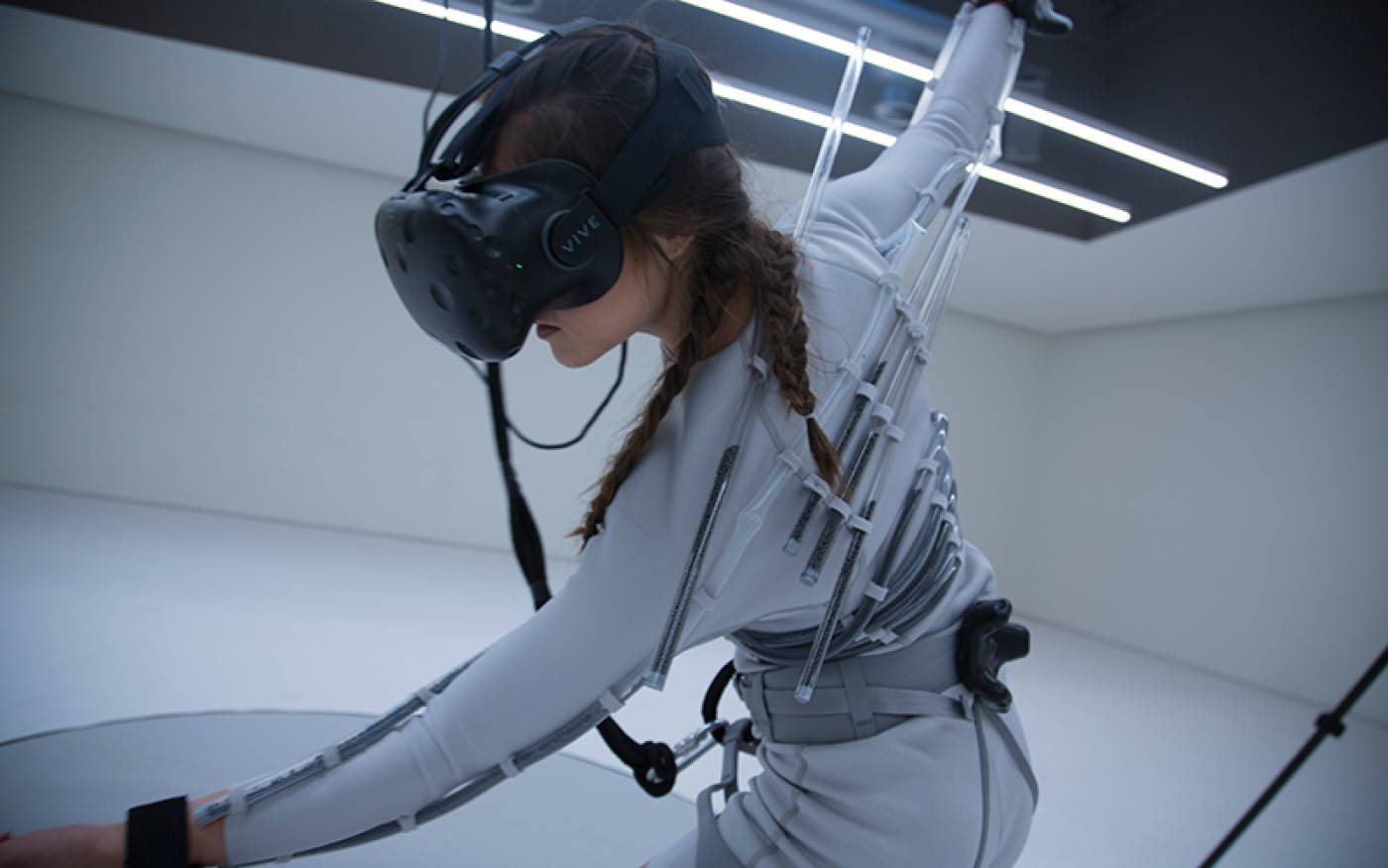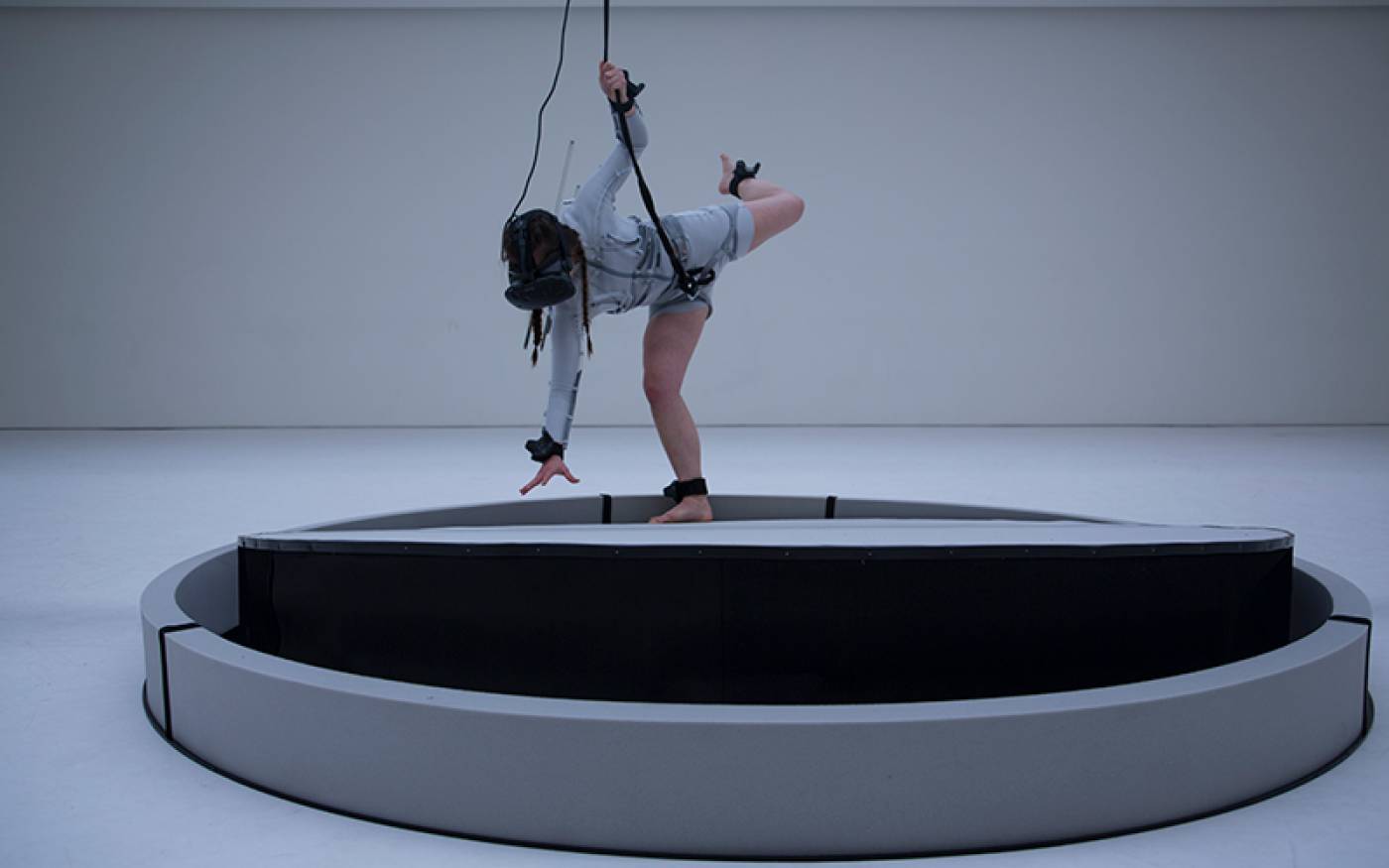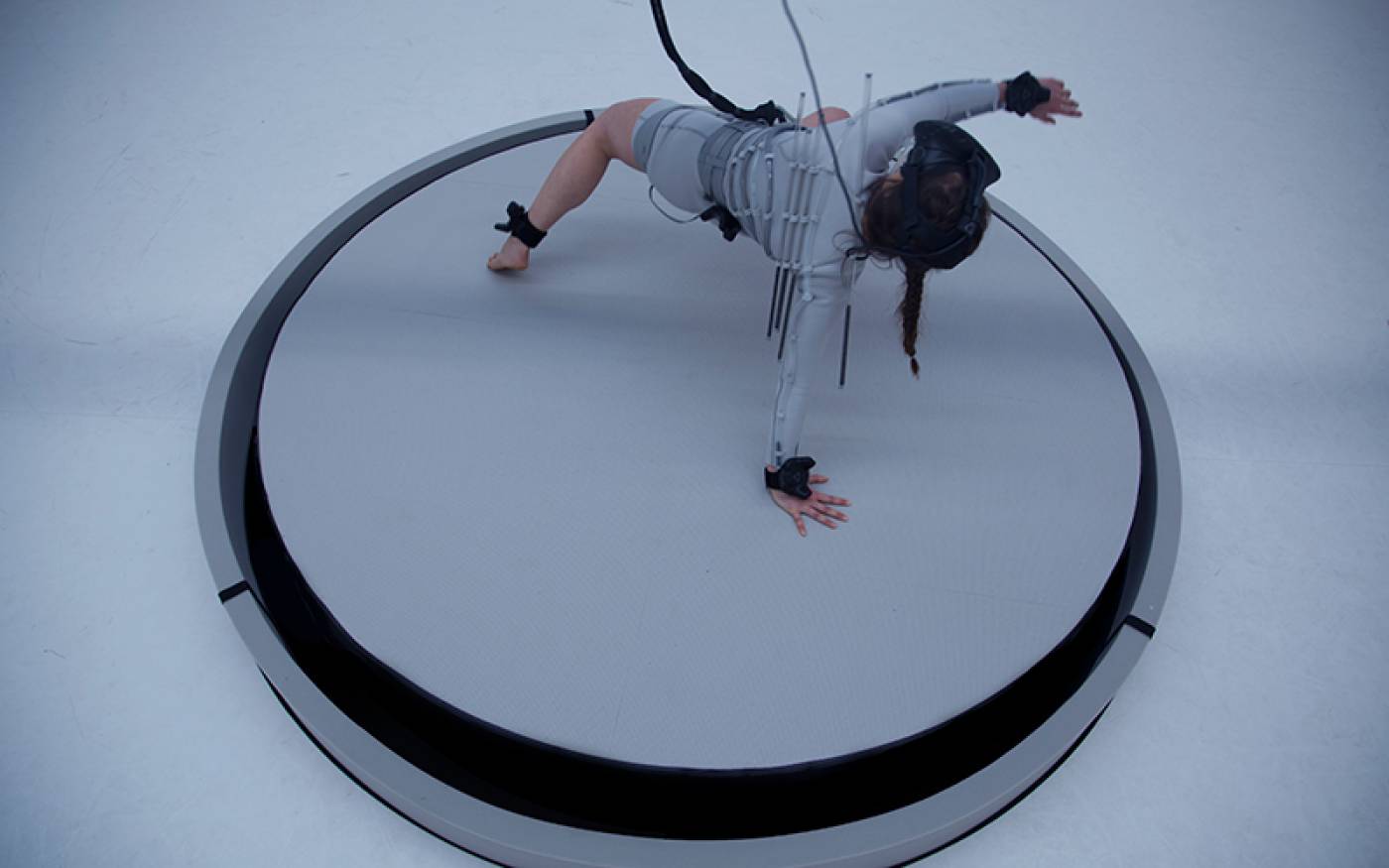Elyne Legarnisson
(Un)Balance is an interactive experience in extended reality (XR) inviting participants to play on the edge of stability. Virtual and physical tools are combined to create an alternative reality in which participants are provoked to break habitual movement patterns. (Un)Balance extends body awareness through augmenting and shifting the perception of one’s body and the surrounding world.
The XR experience interrogates human-space interactions to broaden our repertoire of movements. It draws upon somaesthetics theory which accentuates the aspect of bodily experience in aesthetics and spatial engagement and foregrounds the moving body as a malleable instrument through which we perceive the world. (Un)Balance suggests that sensory perception is amplified by playfully learning body awareness through moving in unusual ways and exploring different response patterns. The non-goal-oriented experience in XR engages participants in an exploratory process. Emphasising the core of the body as the least engaged body part in everyday life, body awareness is extended and sustained through sensory augmentation, unpredictable patterns of response, and partial incoherence of the virtual and physical layers of the experience. Guided by curiosity and a desire to understand this alternative reality, the participant explores the world through play.
The experience is composed of four interwoven elements. The participant moves on a tilting platform, which pushes the sense of balance to its limits. Apparel worn on the torso augments sensations of shifting weight through moving and balancing and contributes haptic and auditory stimulation. Finally, a VR headset and a set of motion trackers placed on the participant’s body as well as the platform enable a virtual avatar and a virtual world to change in substance and gravity attraction in response to the participant’s movements.
In contrast to contemporary spatial contexts and interactions which tend to limit and control movement and place importance on efficiency, (Un)Balance imagines a world where embodied interactions aim at training curiosity and exploration.



 Close
Close

